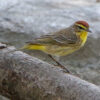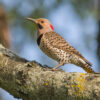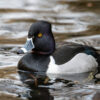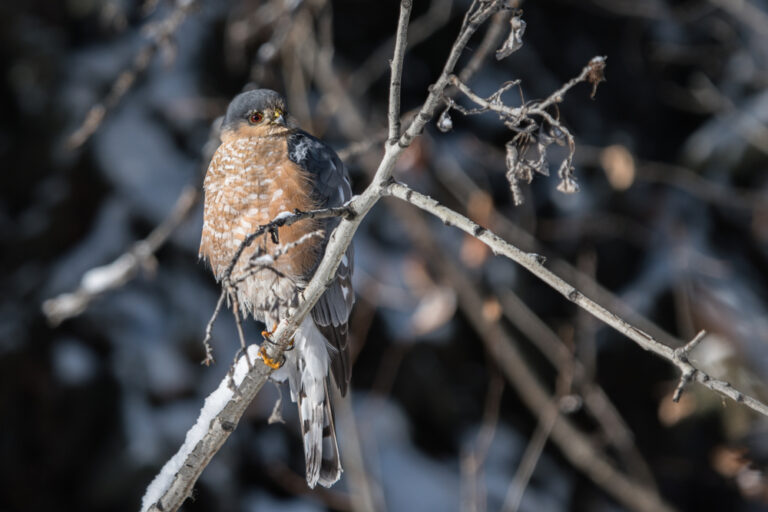
Sharp-shinned Hawk, Accipiter striatus
Bill Rowe
The Sharp-shinned Hawk is the smallest of our trio of accipiters—hawks that specialize in hunting other birds—and distinguishing it from Cooper’s Hawk, the middle-sized accipiter, is a famous problem (see Identification). It helps a little that they have different patterns of range and seasonal occurrence. In the nesting season, Sharp-shins are woodland birds that breed, for the most part, much farther north than Cooper’s, all across the coniferous forests of the north country from Alaska to Newfoundland, south into the northern U.S. and down our major mountain ranges. They are very seldom found in the Midwest in summer, unlike Cooper’s, which is a permanent resident here. Come fall, however, Sharp-shins are one of the most numerous migrant hawks, and they remain a winter resident over most of the U.S. and Mexico. There are also populations of Sharp-shins (or birds very much like them) in parts of South America. Given the food preference of this species, it is not always a welcome visitor near our homes, but it’s important to remember that everything has to eat something—so homeowners might consider adopting a tolerant attitude toward any accipiters that happen to hang around their feeders and take a few birds as part of the natural scene.
IDENTIFICATION: Let’s take this one step at a time. (1) Is it an accipiter? Perched, these have short wings that cover only the base of the tail; this separates them from other hawks. Flying, they use several fast flaps and a sail—an exaggerated version of what all hawks do—and their banded tails extend prominently behind them. (2) How big is it? If only the size of a Blue Jay, it’s a Sharp-shin, probably a male; if crow-size, it’s Cooper’s, probably a female. In between, size is tricky to judge and not a safe criterion. (3) What is the impression it gives in flight? If it has a small head that sticks out only a little past the wings, plus a medium tail, it is likely a Sharp-shin, especially if its wingbeats are very fast and snappy. A bird with a longer tail, prominent head, and more deliberate wingbeats is likely a Cooper’s. (4) What is its tail shape? If clearly squared off with sharp corners, or even notched, it is probably a Sharp-shin; if clearly rounded, probably a Cooper’s. But this is variable and not safe by itself. (5) What are its plumage features? Adults of both are gray or blue-gray above and barred reddish below, while juveniles are brown above and streaked below. For the subtle differences between the species, consult any good field guide; we are out of room here. And remember that even more than most hawks, accipiters often give only brief, imperfect views. Experienced birders will always list them as “Cooper’s/Sharp-shinned Hawk” if they aren’t sure.
ST. LOUIS STATUS: Fairly common migrant, mostly September-October and March-April; uncommon but regular in winter. Absent from mid-May to mid-August.
Learn more and listen to the calls of Sharp-shinned Hawks here.
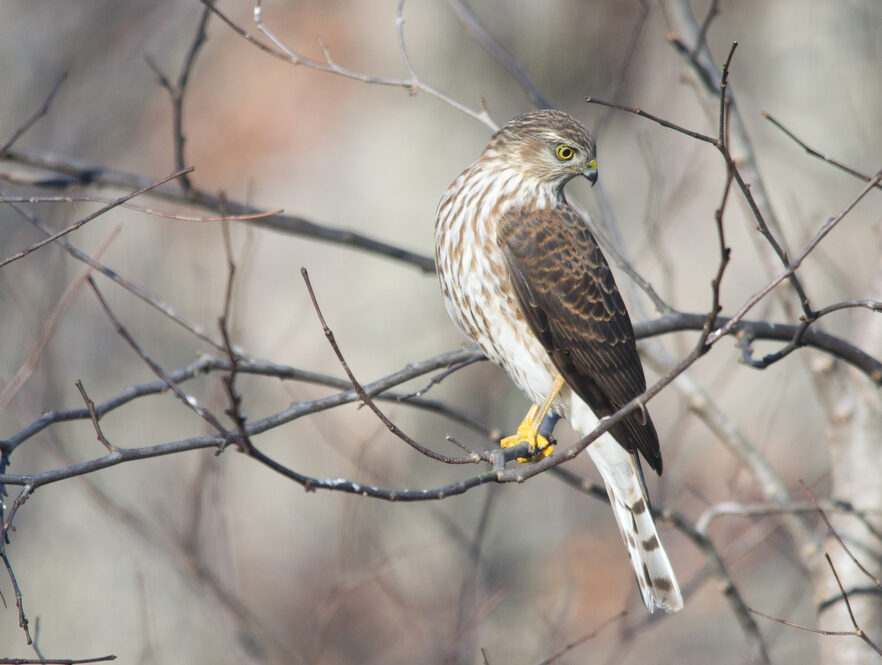
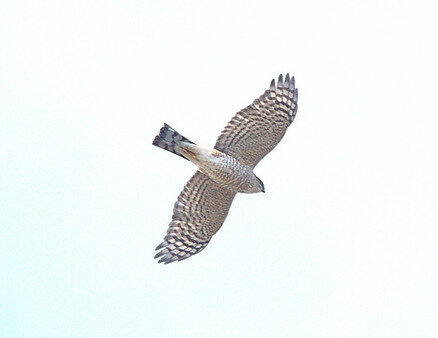
Juvenile: Note rounded head, medium-length tail with square tip, very thin legs.
Adult: Note smallish head, medium tail with square tip.
Photo Credit: Al Smith


